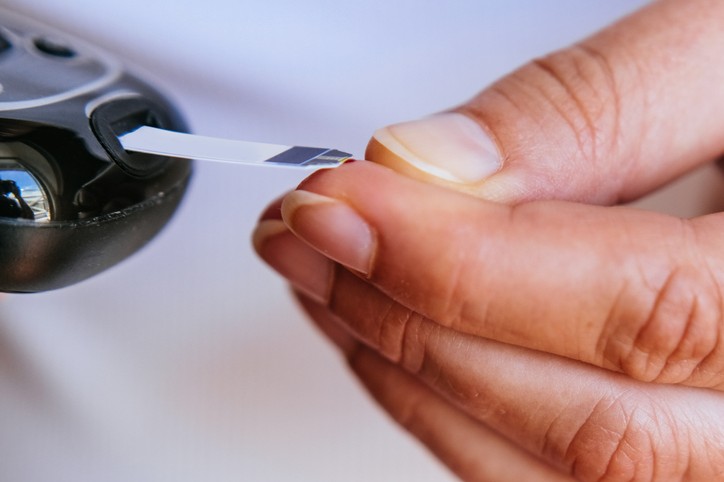Taking an in-office gestational diabetes (GD) test at around 24 to 28 weeks of pregnancy is one of those necessary evils, at least if you want to avoid using a glucometer multiple times a day for three to four months. Or worse, risk being rushed to a C-section as some doctors/hospitals will assume, out of precaution, that you have GD if you don’t have proof that you passed an in-office test.
Let’s define exactly what gestational diabetes is.
GD is a complication occurring during pregnancy resulting in elevated glucose (sugar) levels in the bloodstream. “GD occurs from insulin resistance where the insulin receptors aren’t working well,” says Dr. Ariel Revel, OBGYN and the medical affairs manager at Kadimastem, a developer of cell therapies for diabetes and ALS. “Insulin resistance is normal in pregnancy as the goal is to increase the glucose level in the bloodstream for the benefit of the fetus but, because of this, the pancreas has to secret more insulin. There must be a balance and in some patients it doesn’t work well.”
Testing for gestational diabetes.
To test for GD, women are typically given a glucose drink with 50 grams of sugar (tip: bring lemon and ice to make it taste better and carve out time for a nap after the test). Fasting is not typically required (or recommended) before the test. Then, one hour after downing the drink, a blood test is administers to evaluate the level of glucose in the blood. If the results come back elevated, then the woman does a diagnostic test involving a glucose drink with 100 grams of sugar.
Risk factors for gestational diabetes.
Risk factors are both genetic and lifestyle. “Risk factors include obesity, age, family history, polycystic ovary syndrome, smoking and ethnicity,” says Dr. Revel. “Also if you’ve had GD it tends to re-occur.” Unfortunately there are no signs and there are plenty of active women who have healthy diets that find themselves diagnosed with GD. That said Dr. Revel notes that controlling the way pregnant women eat can be helpful. “Eat more balanced meals, limit sugar and exercise.”
Consequences of being diagnosed with gestational diabetes.
“If the diagnosis from the test is that the patient is of some risk – meaning the baby will be fat and there will likely be complications during delivery, like the shoulders of the baby won’t be able to pass through the birth canal – then what you want to do is combat the situation by lowering the glucose in the blood as GD is dangerous for the baby,” says Dr. Revel. “Knowing the mother has GD is also important for the pediatrician to know once the baby is born as the baby will need be followed to make sure he/she has enough glucose to avoid hypoglycemia.
“During pregnancy the patient will need to change her lifestyle by adopting a diet recommended by a dietician,” says Revel. “If diet changes aren’t enough, then the patient would need oral meds or insulin. It’s common to offer an insulin pump so that it can give insulin in a regular fashion during the pregnancy.”
While GD goes away after delivery Dr. Revel cautions that sometimes it’s a red flag that the patient might develop Type 2 diabetes later in life. “This would be lifestyle related, however, so if the woman has GD and reorganizes her lifestyle, then it can be prevented. It should be considered a warning.”








